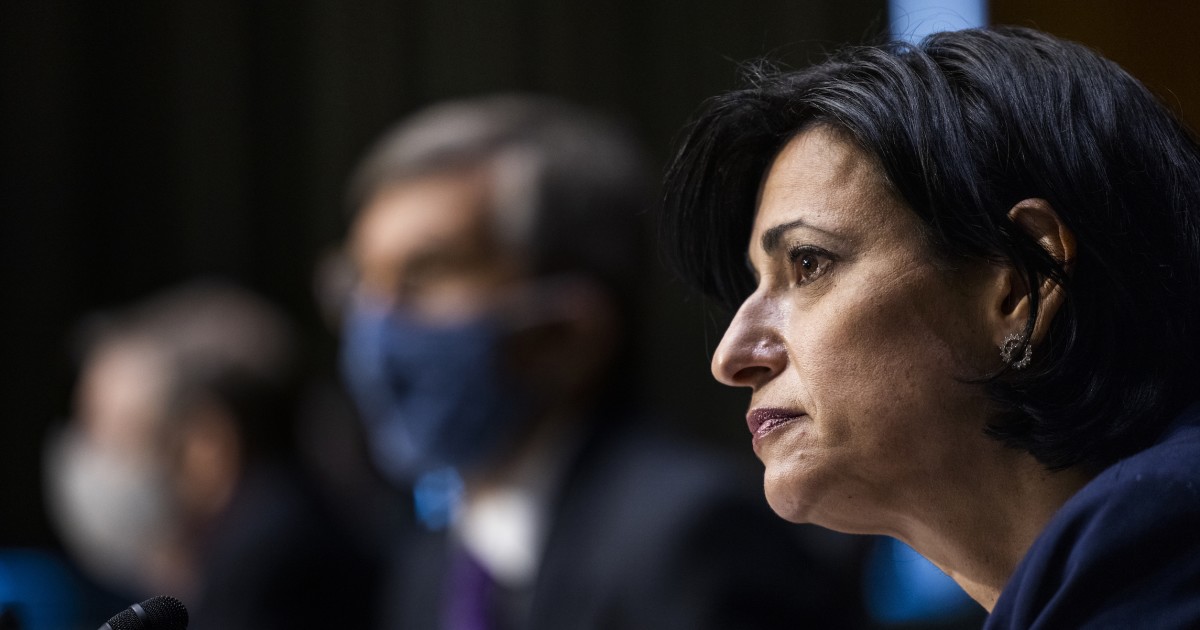
The Centers for Disease Control and Prevention’s conservative COVID-19 safety guidelines have lagged behind public attitude about social distancing now that the pandemic is receding and, in some cases, has been criticized by outside experts.
More than 58% of U.S. adults have received at least one dose of a vaccine, while nearly 45% have been fully vaccinated. While people have begun ditching those outdated guidelines in large numbers, the CDC still encourages fully vaccinated adults to adhere to certain social distancing protocols and avoid nonessential travel.
Here are some other examples of the outdated safety recommendations issued by the federal health agency this year:
1. The CDC has been criticized for overstating the risk of the virus spreading outdoors. Virologists have argued that the CDC’s characterization of outdoor spread, that it accounts for “less than 10%” of transmission, was vastly overstated, according to the New York Times. The actual transmission rate outdoors is likely far lower, possibly as low as 0.1%, according to Dr. Monica Gandhi, an infectious disease expert at the University of California, San Francisco.
The CDC’s misleading benchmark was based on a “misclassification of some Covid transmission that actually took place in enclosed spaces,” the New York Times reported. To back up its figure, the agency cited reports of increased outdoor transmission in Singapore, but the studies, which examined construction sites, likely classified some indoor transmission as outdoor.
Other countries have embraced evidence that the virus spreads at higher rates indoors. The Japanese government, for instance, has encouraged people to avoid the “Three C’s”: closed spaces, crowded places, and close-contact settings.
FDA EXPANDS PFIZER VACCINE AUTHORIZATION TO INCLUDE TEENAGERS AGES 12 TO 15
2. The CDC was behind by more than a year in acknowledging that the virus is airborne, having revised guidelines only last week that transmission is caused by the “inhalation of air carrying very small fine droplets and aerosol particles that contain infectious virus.” The agency also acknowledged that the aerosolized particles can infect people further than 6 feet away, “and in some cases to people who have passed through that space soon after the infectious person left.” Previously, the CDC insisted that touching contaminated surfaces and “close contact” with infected people were the main drivers of rapid spread of the virus, “not airborne transmission.”
Infectious disease experts have been warning global health entities that aerosolized virus particles linger in the air, but guidance from the CDC and the World Health Organization maintained that the virus spread via large droplets expelled in the air from people with COVID-19. More than 230 scientists in 32 countries urged the WHO last summer to update recommendations to reflect evidence that “beyond any reasonable doubt … viruses are released during exhalation, talking, and coughing in microdroplets small enough to remain aloft in air and pose a risk of exposure at distances beyond 1–2 m from an infected individual.”
The CDC’s insistence that the virus was transmitted through large droplets released into the air and contaminated surfaces prompted many to focus efforts on cleaning and to use sanitizers to excess. Early in the pandemic, it became common practice for people to disinfect packages and groceries. The demand for hand sanitizers also skyrocketed in 2020. In the week ending Feb. 23, 2020, as the first coronavirus outbreak was beginning, dollar sales of hand sanitizers in drug stores rose by more than 80% compared to the same period of 2019.
3. The CDC still recommends that people who have been fully vaccinated still adhere to social distancing protocols and masking. The agency updated domestic travel guidelines on April 2, lifting testing and quarantine requirements for fully vaccinated travelers within the United States to reflect the positive signs that the pandemic is on its way out. CDC Director Rochelle Walensky contradicted those guidelines later that day.
Walensky, who has contradicted agency guidelines before, discouraged all nonessential travel later that day during a White House coronavirus response team briefing, citing an increase in new cases and hospitalizations. She told reporters on April 2 that she “would advocate against general travel overall.”
“Our guidance on unvaccinated individuals really is to limit travel to only essential travel with masking — protective, prevention strategies,” Walensky said. “Our guidance speaks to the safety of [traveling] … If you are vaccinated, it is lower risk.”
People have not waited for the go-ahead to travel from federal health officials, though. While airline travel plummeted early in the pandemic, it began to increase over the summer, usually a busy time for the industry. It climbed again over the Thanksgiving, Hanukkah, Christmas, and New Year’s holidays. For instance, roughly 6.8 million people traveled through airports over the Thanksgiving holiday. About 1.1 million people traveled on planes on the day before Christmas Eve alone.
WHAT TO KNOW ABOUT BIDEN’S PROPOSED COVID-19 VACCINE PATENT WAIVERS
4. The CDC didn’t announce until April 27 that vaccinated people could go out without masks “while walking, exercising, dining, or attending small gatherings outside,” lagging far behind the general public’s attitude. The CDC added that vaccinated people should still wear masks indoors around unvaccinated people, or in settings where people’s vaccination status is unknown. Public health experts, including former Food and Drug Administration Commissioner under the Trump administration Dr. Scott Gottlieb, have argued that lifting outdoor mask recommendations is overdue.
Gottlieb said earlier that week that “policymakers must show they’re willing to ease restrictions as swiftly as they imposed them, and a critical early test will be on wearing masks outside.”
Epidemiologists have known since summer 2020 that transmission rates outdoors are considerably lower than indoors. Still, the CDC has issued conservative guidance about masking outdoors, recommending that vaccinated people still wear masks outdoors when in crowded venues.
